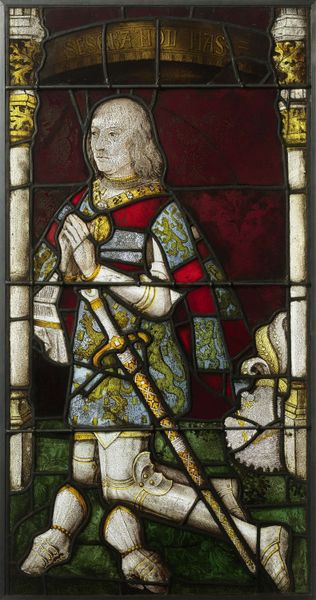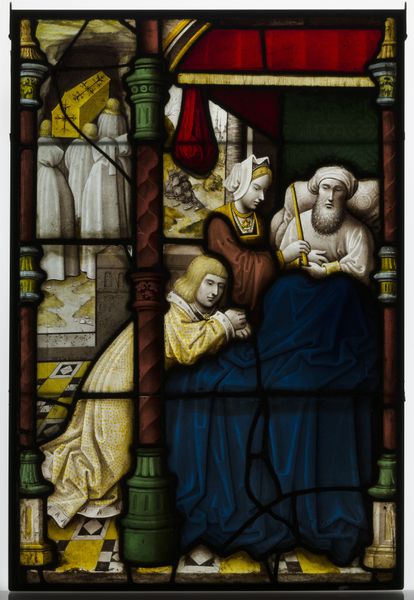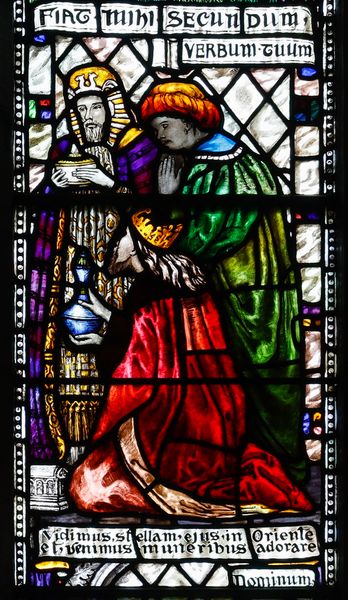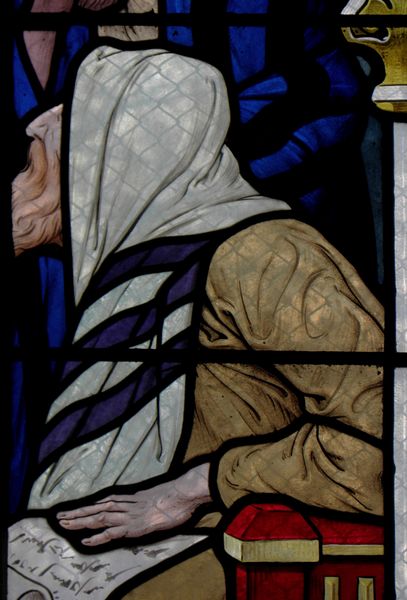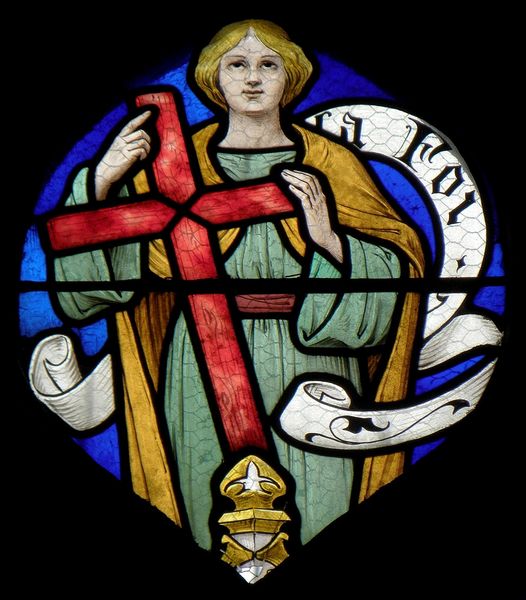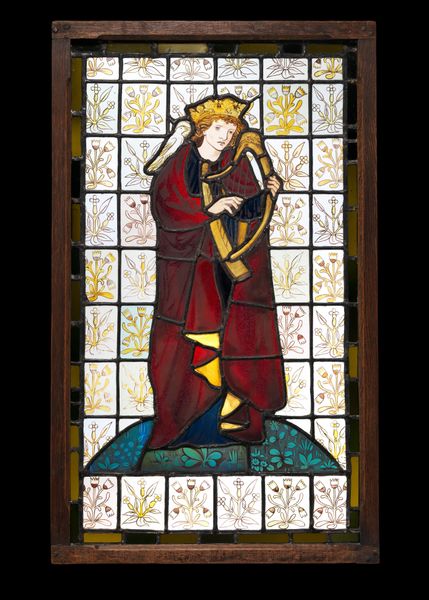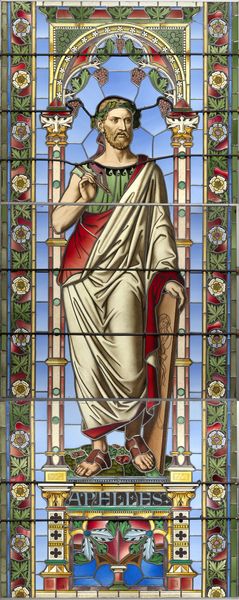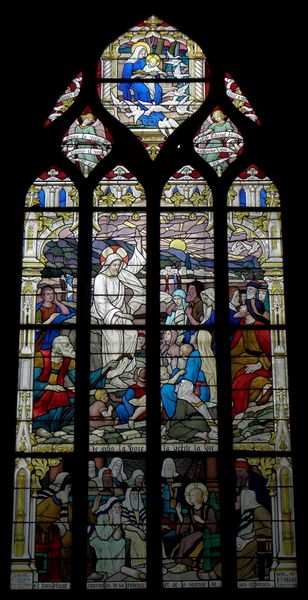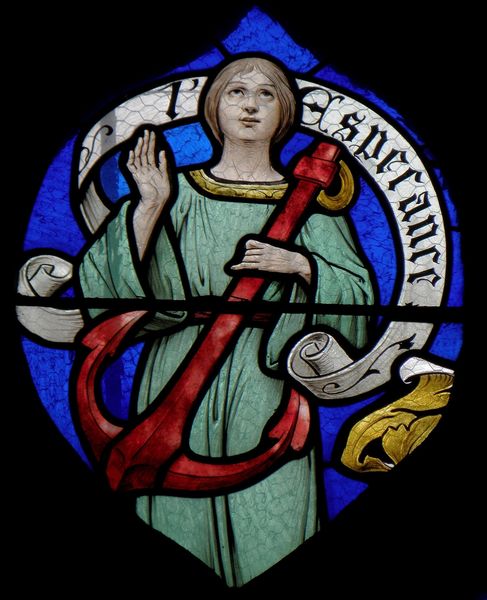
St Paul, window from the Chapel of Cheadle Royal Hospital, Manchester 1892
0:00
0:00
#
portrait
#
arts-&-crafts-movement
#
stain glass
#
stained glass
Dimensions: 122 x 45 cm
Copyright: Public domain
Curator: Standing before us is Edward Burne-Jones's stained glass depiction of "St Paul, window from the Chapel of Cheadle Royal Hospital, Manchester," crafted in 1892. Editor: My first impression is one of subdued reverence. The figure seems illuminated from within, with rich jewel-toned reds casting a somber yet dignified light. Curator: Burne-Jones, heavily associated with the Arts and Crafts movement, was deeply invested in the production process. Think about the selection, cutting, and arrangement of each shard of glass and the leading holding the composition together. The intense labor really highlights the value placed on craftsmanship itself. Editor: The symbol of St. Paul holding the book connects us to the Apostle's theological significance. Notice his downcast gaze and serene expression—elements which imbue Paul with humility. The halo confirms his sanctity, while the gold patterning on his robes hints at divinity and emphasizes the symbolic weight. Curator: I'd argue that the materiality speaks to an emerging shift within art toward valuing labor and 'truth' in the creation process, reflecting social concerns related to the working class. Stained glass wasn’t merely an aesthetic choice, it involved real work by human hands during industrialization. Editor: But aren't the visual cues, particularly the Pre-Raphaelite idealization of St Paul’s features and expression, the elements which elicit feelings of piety and contemplative introspection? Burne-Jones effectively tapped into centuries of iconographic representation to instill a certain emotion, using beauty to inspire faith. Curator: Interesting to consider how these aesthetic choices function both to reflect Burne-Jones’ specific historical concerns and broader social shifts, like the revival of artisanal values amid mass production, and also the long traditions from which Burne-Jones borrowed and reworked motifs and means of representation. Editor: It's a testament to how symbolic imagery and its ability to inspire awe can endure regardless of artistic movements. I find this single image evokes the enduring weight of both religious history and tradition. Curator: So, in considering "St. Paul", we're left not just with the visual and the symbolic, but also a window into the artistic means that underpinned an evolving modern world. Editor: Indeed. Reflecting on "St Paul" makes clear just how interconnected both representation and the tangible process behind that representation are, especially for artworks that engage in centuries-old symbolic tradition.
Comments
No comments
Be the first to comment and join the conversation on the ultimate creative platform.


